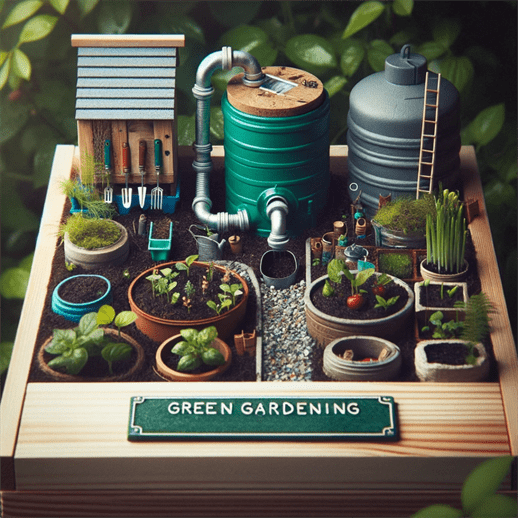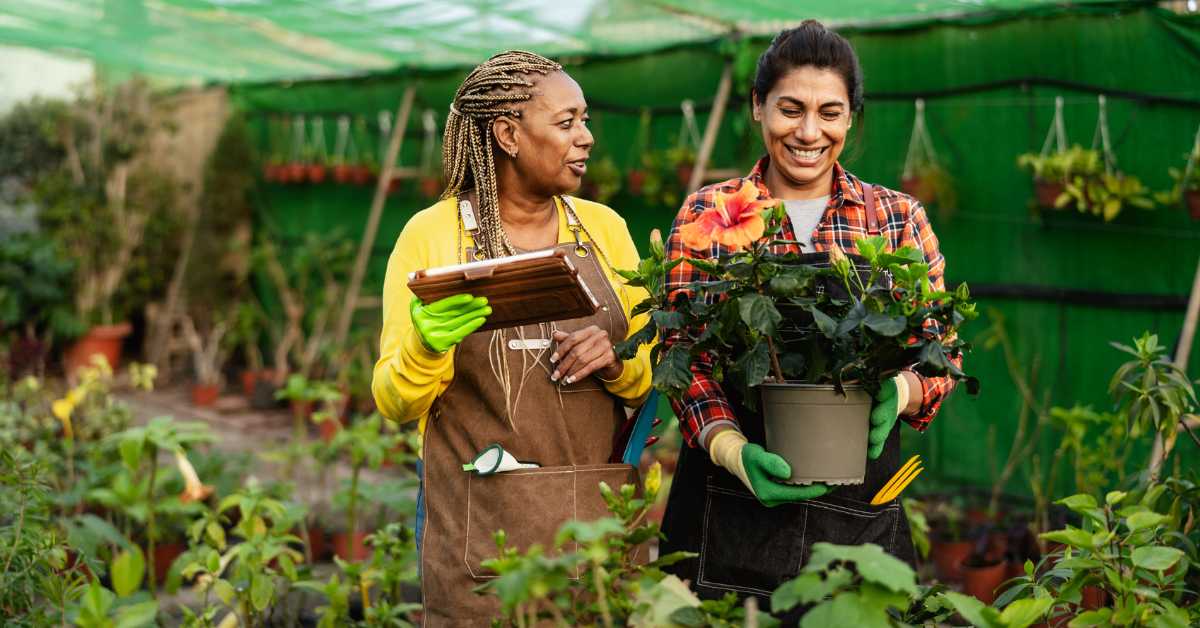In an age where environmental preservation is more crucial than ever, sustainable gardening stands as a beacon of hope and action. It’s a practice that melds the joys of gardening with the principles of sustainability, creating spaces that not only delight the senses but also contribute positively to the planet.
This comprehensive guide is designed to walk you through the essentials of sustainable gardening, providing a blueprint for cultivating a garden that is in harmony with nature and environmentally responsible.

The Essence of Sustainable Gardening
Sustainable gardening is an approach that focuses on minimizing environmental impact and promoting ecological balance. It involves using resources wisely, reducing waste, and maintaining a garden that is both productive and in sync with the local ecosystem.
By adopting sustainable practices, gardeners can contribute to biodiversity, conserve natural resources, and create a healthier environment.
Building Healthy Soil: The Foundation of Sustainability
Healthy soil is the cornerstone of a sustainable garden. It supports plant health, retains moisture, and helps balance the ecosystem.
Enrich your soil with organic matter like compost and well-rotted manure. Avoid chemical fertilizers and turn to natural alternatives that nourish the soil and the plants it supports.
Water Wisdom: Conserving a Precious Resource
Effective water management is critical in sustainable gardening. Employ techniques like rainwater harvesting, drip irrigation, and mulching to maximize water efficiency.
Choose drought-tolerant plants and design your garden in a way that reduces water usage without compromising on beauty.
Embracing Plant Diversity and Native Species
A diverse garden supports a range of wildlife and promotes a balanced ecosystem. Incorporate native plants, as they are adapted to local conditions and require less maintenance.
Plant a mix of species to ensure year-round interest and ecological support.
Natural Pest and Disease Management
Ditch the chemicals and embrace natural pest control methods. Encourage beneficial insects, use barriers or traps, and practice companion planting to manage pests and diseases organically.
Healthy plants in a balanced environment are less susceptible to problems.
Organic Fertilization: Feeding Plants Naturally
Opt for organic fertilizers to nourish your plants. These can include compost, worm castings, and organic matter. Organic fertilization not only feeds your plants but also improves soil structure and fertility over time.
Recycling and Upcycling in the Garden
Sustainable gardening promotes the reuse and recycling of materials. Find creative ways to use household items and garden waste.
Upcycle containers, create compost from organic waste and repurpose materials to reduce your environmental footprint.
Encouraging Wildlife and Beneficial Insects
A sustainable garden is a haven for wildlife. Create habitats for birds, bees, and beneficial insects by providing food, water, and shelter.
This not only enhances the natural beauty of your garden but also contributes to local biodiversity.
Sustainable Lawn Care
Conventional lawns can be resource-intensive. Consider alternatives such as native grasses, ground covers, or creating areas for edible gardens.
If you do maintain a lawn, practice eco-friendly care including natural weed control and organic lawn feed.
Mindful Gardening Practices
Be mindful of your gardening practices and their impact on the environment. Use hand tools instead of gas-powered equipment, collect rainwater, and avoid single-use plastics. Every small step towards sustainability makes a difference.
Continuous Learning and Community Engagement
Sustainable gardening is an evolving field. Stay informed about the latest practices and innovations.
Engage with local gardening communities, participate in workshops, and share knowledge to foster a broader move towards sustainable practices.
Creating a Garden That Tells a Story
Your garden should reflect your journey towards sustainability. Each plant, pathway, and recycled container tells a story of commitment and care for the environment. Let your garden be a space of inspiration and education for others.
A Greener Path Forward
Sustainable gardening is more than a hobby; it’s a statement of care and responsibility towards our planet.
By adopting these practices, your garden becomes a testament to sustainability, showing that beauty and environmental stewardship can go hand in hand.
Embrace the principles of sustainable gardening and enjoy the profound satisfaction of nurturing a garden that not only blooms but also contributes positively to the world around it.














